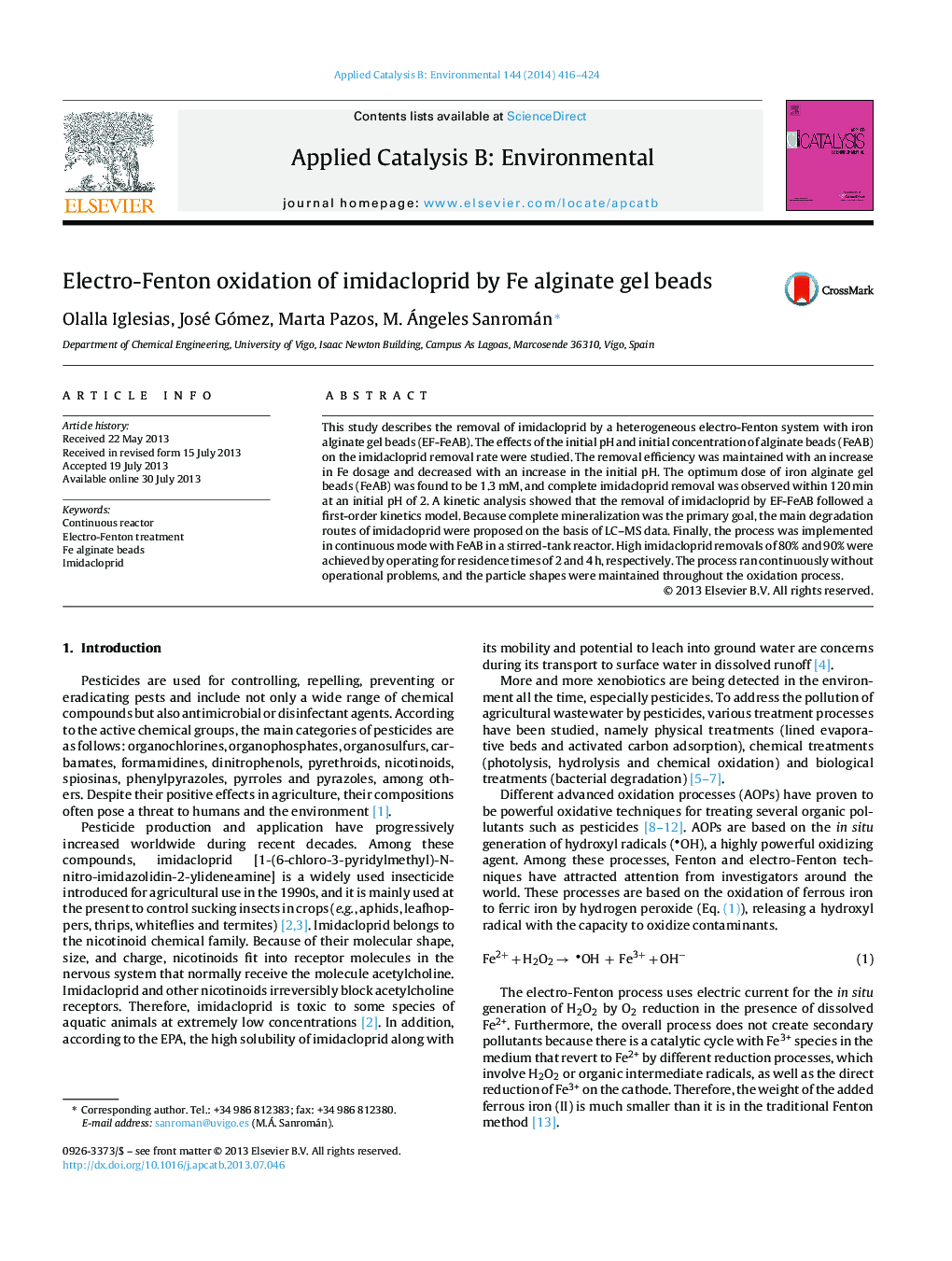| Article ID | Journal | Published Year | Pages | File Type |
|---|---|---|---|---|
| 45377 | Applied Catalysis B: Environmental | 2014 | 9 Pages |
•The imidacloprid remediation efficiency of Fe alginate gel beads was demonstrated.•Fe alginate gel beads act as catalysts when maintained at a pH near the natural solution.•The primary degradation routes of imidacloprid were proposed on the basis of LC–MS data.•Fe alginate gel beads allow for continuous imidacloprid treatment with high resulting removal.•No operational problems were detected during batch or continuous electro-Fenton processes.
This study describes the removal of imidacloprid by a heterogeneous electro-Fenton system with iron alginate gel beads (EF-FeAB). The effects of the initial pH and initial concentration of alginate beads (FeAB) on the imidacloprid removal rate were studied. The removal efficiency was maintained with an increase in Fe dosage and decreased with an increase in the initial pH. The optimum dose of iron alginate gel beads (FeAB) was found to be 1.3 mM, and complete imidacloprid removal was observed within 120 min at an initial pH of 2. A kinetic analysis showed that the removal of imidacloprid by EF-FeAB followed a first-order kinetics model. Because complete mineralization was the primary goal, the main degradation routes of imidacloprid were proposed on the basis of LC–MS data. Finally, the process was implemented in continuous mode with FeAB in a stirred-tank reactor. High imidacloprid removals of 80% and 90% were achieved by operating for residence times of 2 and 4 h, respectively. The process ran continuously without operational problems, and the particle shapes were maintained throughout the oxidation process.
Graphical abstractFigure optionsDownload full-size imageDownload as PowerPoint slide
